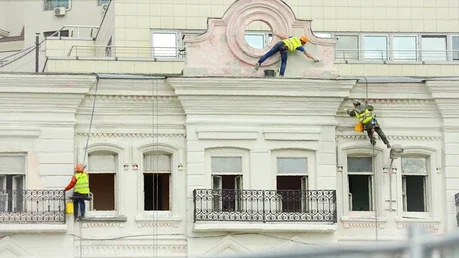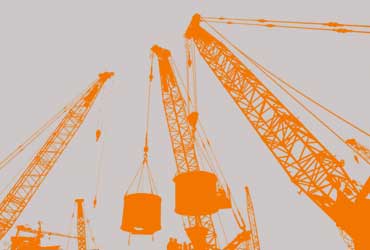
5 Reasons for Facade Restoration & Maintenance in 2024: A Comprehensive Guide
Facade restoration and maintenance are essential for building owners who want to keep their properties in top condition. A building’s facade is the first thing people notice about it, and it plays a crucial role in creating a positive first impression. In addition to enhancing the building’s aesthetics, facade restoration and maintenance also improve its structural integrity, increase its property value, and ensure safety and compliance.
One of the main reasons why building owners should consider facade restoration and maintenance is to enhance the building’s aesthetics. Over time, a building’s facade can become damaged, discolored, or outdated, which can detract from its overall appearance. Facade restoration and maintenance can help to restore the building’s original beauty, making it more attractive to potential tenants, customers, and visitors.
Another reason why building owners should prioritize facade restoration and maintenance is to improve the building’s structural integrity. A damaged facade can compromise the building’s structural integrity, making it more susceptible to damage from weather, pests, and other factors. By restoring and maintaining the facade, building owners can help to ensure that the building remains structurally sound and safe for occupants.
Key Takeaways
- Facade restoration and maintenance are essential for enhancing building aesthetics, improving structural integrity, increasing property value, and ensuring safety and compliance.
- Restoring and maintaining the building’s facade can help to restore its original beauty and make it more attractive to potential tenants, customers, and visitors.
- Building owners can also improve the building’s structural integrity by restoring and maintaining the facade, making it more resistant to damage from weather, pests, and other factors.
Enhancing Building Aesthetics
Maintaining a building’s aesthetic appeal is a crucial aspect of keeping it in good condition. Facade restoration and maintenance are essential to ensuring that a building looks its best. There are several reasons why enhancing the aesthetics of a building is important.
Visual Appeal
The visual appeal of a building is one of the most important factors that contribute to its overall value. A well-maintained facade can significantly enhance the visual appeal of a building, making it more attractive to potential buyers or tenants. A building with a beautiful facade can also help to create a positive image for the surrounding area, which can be beneficial for local businesses.
One way to enhance the visual appeal of a building is by restoring its facade. This involves repairing any damage, cleaning the surface, and repainting or re-cladding the exterior. This can help to create a more modern, fresh look, which can be especially important for older buildings.
Architectural Integrity
Another reason why enhancing the aesthetics of a building is important is to maintain its architectural integrity. A building’s facade is an essential part of its overall design, and any damage or deterioration can significantly impact its appearance. By restoring the facade, it is possible to preserve the building’s architectural integrity, ensuring that it remains true to its original design.
Restoring the facade of a building can also help to protect it from further damage. This is because a restored facade is less susceptible to wear and tear, which can ultimately prolong the life of the building.
In conclusion, enhancing the aesthetics of a building is an essential aspect of facade restoration and maintenance. By restoring the facade, it is possible to enhance the visual appeal of the building, maintain its architectural integrity, and protect it from further damage.
Improving Structural Integrity
Facade restoration and maintenance are essential to improving the structural integrity of any building. Over time, materials used in the construction of a building will deteriorate due to exposure to the elements. As a result, the building’s structural integrity can be compromised, leading to safety concerns and costly repairs.
Material Durability
One of the primary reasons for facade restoration and maintenance is to ensure the durability of building materials. The materials used in the construction of a building must be able to withstand the elements and remain structurally sound for many years. However, over time, materials can become damaged or weakened, leading to structural instability. By restoring and maintaining the facade of a building, the durability of the materials can be improved, ensuring the longevity of the building’s structure.
Weather Resistance
Another significant factor that can impact the structural integrity of a building is exposure to weather. Extreme weather conditions such as rain, snow, and wind can cause significant damage to a building’s facade, leading to structural instability. By restoring and maintaining the facade of a building, weather resistance can be improved, ensuring that the building can withstand extreme weather conditions.
In conclusion, improving the structural integrity of a building is essential to ensure the safety and longevity of the structure. By restoring and maintaining the facade of a building, the durability of materials can be improved, and weather resistance can be increased. This will help to prevent costly repairs and ensure that the building remains structurally sound for many years to come.
Increasing Property Value
Facade Repair and maintenance can increase the property value of a building in several ways. The following are two of the main ways that facade restoration can increase property value:
Market Attractiveness
A well-maintained and restored facade can significantly increase the market attractiveness of a building. Potential buyers or tenants are often willing to pay a premium for a building that looks well-maintained and visually appealing. A clean and well-maintained facade can also make a building stand out from other buildings in the area, which can be especially important in areas with a lot of competition. In addition, a restored facade can help attract higher-quality tenants, which can lead to higher rents and better long-term returns on investment.
Investment Returns
Facade restoration and maintenance can also lead to higher investment returns. According to a study by the National Park Service, every dollar spent on facade restoration can result in a return of up to $4 in increased property value. This means that even small investments in facade restoration can result in significant returns on investment. In addition, facade restoration can help extend the lifespan of a building, which can result in lower long-term maintenance costs.
Overall, facade restoration and maintenance can be a smart investment for building owners looking to increase the value of their properties. By increasing market attractiveness and investment returns, facade restoration can help building owners achieve their financial goals while also preserving the historic and architectural significance of their buildings.
Ensuring Safety and Compliance Regulatory Standards
Facade restoration and maintenance must comply with regulatory standards to ensure the safety of occupants and the public. Building codes and regulations vary from state to state, but they all have specific requirements for facade safety. For example, the New York City Department of Buildings requires that all facades be inspected every five years and that any unsafe conditions be corrected immediately [1]. The International Building Code (IBC) also has specific requirements for facade safety, including load-bearing capacity, wind resistance, and fire resistance.
To ensure compliance with regulatory standards, building owners should work with qualified facade restoration and maintenance professionals who are familiar with local building codes and regulations. These professionals can help building owners develop a facade maintenance plan that meets regulatory requirements and ensures the safety of occupants and the public.
Occupant Safety
Facade restoration and maintenance is essential for occupant safety. Facade failures can result in serious injury or death, as well as property damage. Regular facade inspections and maintenance can help prevent facade failures and ensure the safety of occupants.
Building owners should ensure that their facade maintenance plan includes regular inspections, repairs, and cleaning. They should also ensure that any identified safety hazards are promptly addressed and corrected. Building owners should work with qualified facade restoration and maintenance professionals who have the expertise and experience to identify potential safety hazards and develop effective solutions.
In summary, ensuring safety and compliance is a critical aspect of facade restoration and maintenance. Building owners should work with qualified professionals to develop a facade maintenance plan that meets regulatory requirements and ensures the safety of occupants and the public. Regular inspections, repairs, and cleaning are essential for preventing facade failures and ensuring occupant safety.
Frequently Asked Questions
How does facade restoration contribute to a building’s longevity?
Facade restoration is crucial to the longevity of a building. Buildings those exposed to harsh weather conditions, pollution, and other environmental factors that can cause damage to the facade. Restoration helps to repair any damage and prevent further deterioration, which can extend the life of the building. Regular maintenance and restoration can also help to identify potential issues before they become major problems.
What are the safety implications of regular facade maintenance?
Regular facade maintenance is essential to ensure the safety of the building’s occupants and the public. Over time, the facade can become weakened and unstable, posing a risk to those who come into contact with it. Regular maintenance and restoration can help to identify and address these issues before they become a safety hazard.
Can facade restoration improve energy efficiency in buildings?
Yes, facade restoration can improve energy efficiency in buildings. A building’s facade is responsible for a significant amount of heat loss or gain, depending on the season. Restoration can help to seal any gaps or cracks in the facade, which can reduce energy consumption and lower heating and cooling costs.
What are the aesthetic benefits of restoring a building’s facade?
Restoring a building’s facade can have significant aesthetic benefits. A restored facade can enhance the building’s curb appeal, attract new tenants or customers, and increase the overall value of the property. Restoration can also help to preserve the historic character and architectural features of the building.
How often should a building’s facade be inspected and maintained?
The frequency of facade inspections and maintenance depends on several factors, including the age of the building, the type of facade, and the environmental conditions in the area. Mostly, it is recommended that a building’s facade be inspected and maintained at least once a year. However, buildings in areas with harsh weather conditions or high pollution levels may require more frequent inspections and maintenance.
What are the common challenges faced during facade restoration projects?
Facade restoration projects can be complex and challenging. One of the most significant challenges is identifying and addressing all of the issues with the facade, including hidden damage. Another challenge is ensuring that the restoration work is done in a way that is consistent with the building’s historic character, and architectural features. Finally, restoration projects can be costly and time-consuming, requiring careful planning and execution.






